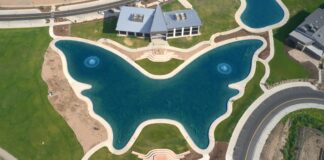Toyota will establish its third U.S. Toyota Research Institute (TRI) facility in Ann Arbor, near the University of Michigan (U-M) campus where it will fund research in artificial intelligence, robotics and materials science. Joining the TRI facility established last January in Palo Alto working with Stanford (TRI-PAL), and in Cambridge working with MIT (TRI-CAM), TRI-ANN is scheduled to open in June and target a staff of approximately 50.

“Beyond the extraordinary work that U-M is doing broadly in advancing automotive safety research—and in autonomous driving, in particular —Toyota has deep roots in the Ann Arbor community,” said Dr. Gill Pratt, CEO of the TRI. “TRI was drawn to Ann Arbor because of the strength of the university; the utility of Mcity and the Mobility Transformation Center which we currently sponsor; the promise of the future American Center for Mobility at Willow Run; and the proximity to, and synergies with, our two well-established Toyota Technical Centers nearby.”
The Toyota Technical Centers have been conducting research in the area of autonomous cars for more than a decade. A group of about 15 team members will transfer to the new TRI-ANN facility when it opens. U-M Professors Ryan Eustice and Edwin Olson are joining TRI-ANN as the area leads for mapping/localization and perception, respectively. Both will be based at the Ann Arbor office, and will retain their U-M faculty positions.
“Sensor hardware and algorithms are improving at a tremendous pace. TRI researchers will push the frontier even further, with the goal of providing safer vehicles and more helpful robots in the home,” said Olson.
Eustice added, “Ann Arbor is a fantastic location for TRI to expand its autonomous driving efforts. We will benefit from Toyota’s existing team and U-M’s research talent and facilities where we can perform extreme-limit testing in a wide variety of environments.”
Although the focus of each of the three strategically located facilities will be broad, each will feature a different core discipline. TRI-ANN will focus primarily on fully autonomous (chauffeured) driving. TRI-PAL will work on what may be termed “guardian angel” driving, where the driver is always engaged but the vehicle assists as needed. TRI-CAM will dedicate a large portion of its work to simulation and deep learning.
The Toyota Research Institute is an enterprise designed to bridge the gap between fundamental research and product development. With initial funding of $1 billion, it has four initial mandates:
- It will strive to enhance the safety of automobiles with the ultimate goal of creating a car that is incapable of causing a crash, regardless of the skill or condition of the driver.
- It will work to increase access to cars to those who otherwise cannot drive, including seniors and those with special needs.
- It will help translate Toyota’s expertise in creating products for outdoor mobility into products for indoor mobility; moving people and goods across the country, across town, or across the room.
- TRI will accelerate scientific discovery by applying techniques from artificial intelligence and machine learning, particularly in the area of materials science. Using computation and machine learning, it hopes to accelerate scientific discovery in this area, lowering costs and improving performance of future mobility systems.
Beyond the projects it will engage in with the three universities (more than 30 are already underway at Stanford and MIT), TRI is enthusiastically pursuing collaboration with other automakers, IT companies, suppliers, research labs and universities to jointly develop autonomous technologies.
“Although the industry, including Toyota, has made great strides in the last five years, much of what we have collectively accomplished has been easy, because most driving is easy,” said Pratt. “Where we need autonomy to help most is when the driving is difficult. It’s this hard part that TRI intends to address. Toyota’s goal is safer mobility for all, at any time, in any place, and the tremendous improvements in quality of life that such universal mobility can bring.”











![[VIDEO] Get More for Your Business in Ardmore. Oklahoma](https://businessfacilities.com/wp-content/uploads/2024/02/maxresdefault-324x160.jpg)
